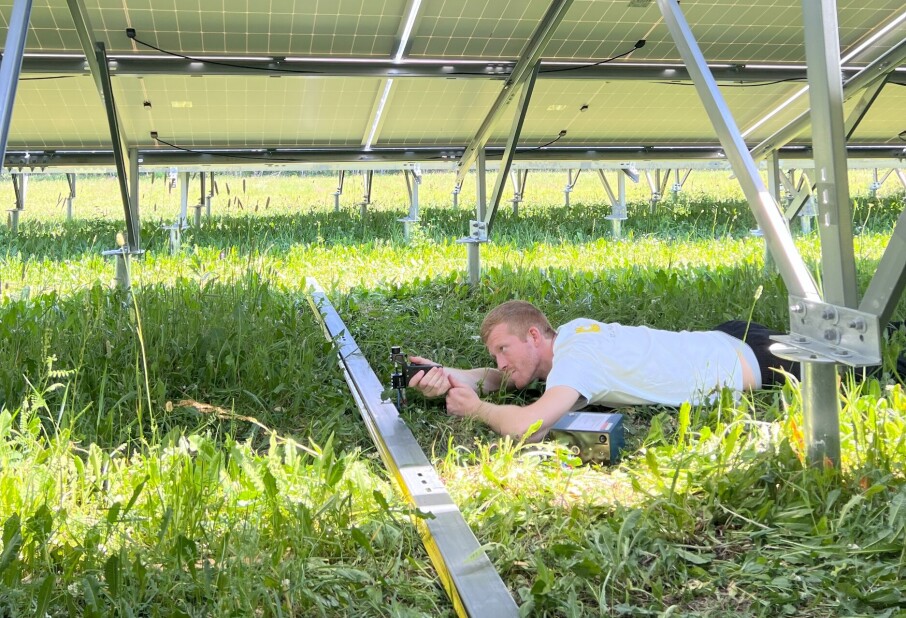
Were women who lived together in the past lesbians or just close friends?
Gender and sexuality were perceived differently in the early 19th century.
‘Petronelle Nielsen and Dorothea Wretmann lived together like two sisters. They had also created mutual wills in favour of the survivor....’
This was written about Petronelle Nielsen in a book from 1926.
Were the two women really like sisters? Or was there something more between them?
Recent research has revealed that Petronelle Nilsen could be considered queer. She was one of the first women in Norway to write about love and affection for other women.

As early as 1824, Nilsen began writing diaries and documenting her travels.
She is not only one of the earliest known queer Norwegian women but also one of the few from that time to describe what we now understand as queer love.
We may still face the same issue as in 1926: It is challenging to determine if historical accounts indicate that people were queer, gay, or lesbian, or if they simply had different views on friendship.
The past through modern eyes
“Our current views on sexuality and gender differ from those of the past. Therefore, labelling someone from history as queer is complex,” says Tonje Louise Skjoldhammer.
She researches queer women's history in the 1800s. She explains that one should be cautious in defining the sexual orientation of people from the past.
She believes that it is difficult to apply our modern understanding of queerness to people from the past.
“Today, close relationships between people of the same gender are often seen as queer. However, in the 1800s, intense, romantic friendships between both women and men were very common,” Skjoldhammer explains.
Stories from affluent women
The stories of women from the 1800s are crucial for understanding the opportunities queer women had to live as they wished.
During the first half of the 1800s, women were dependent on having a man in their lives.
“At that time, women did not have the right to manage their own finances or engage in professional or commercial activities. This made them heavily dependent on the men in their lives, typically a husband or father, who were financially responsible for them,” says Skjoldhammer.
This made it difficult for women to live with other women, but it was easier for the wealthy.
“Women from the upper middle class and above had quite a bit of freedom to live with other women and never marry. As long as they had some access to money to establish a home separate from their family, they had much greater opportunities not to marry,” she says.
Lived more invisibly
It was different for women who did not belong to the middle class or higher.
“We have very little source material about women from lower social classes. These women did not write about themselves, keep diaries, or write letters. They generally could not write or read and did not have time to reflect on their lives and circumstances. So, it’s very difficult to say what life was like for queer women from lower social classes,” she says.
There is more documentation on male homosexuality, particularly because it was illegal between men. The law prohibiting men from having sex with each other was repealed in 1972. Those who were prosecuted are documented in court records and judgments.
Since women were rarely prosecuted, there is little material about women in lesbian relationships, making it difficult to understand how these women lived.
Women living together
It was also not uncommon for women to live together, and this was often not seen as unusual.
“Not until the late 1800s and early 1900s did we get the language to suggest that something was unusual about these two friends. Before then, it was seen within the framework of friendship,” says Skjoldhammer.
Therefore, these women were not suspected. It is also not certain that these women were queer, but they chose not to live with men regardless.
“It appears that it takes an authority figure to show concern for any action to be taken. There isn’t a widespread societal notion that this is a sin and a shame, illogical, and something crucial to address. Instead, there seems to be a sort of quiet acceptance,” she says.
Attitudes in society
The attitudes of society towards two people of the same gender living together influenced the consequences they faced.
Skjoldhammer highlights an example from 1844, which is an exception to the general trend of women not being prosecuted for lesbian relationships. Simonette Vold was reported for ‘unnatural relations’ with two of her maids.
For the local community, this was not new and did not seem problematic.
However, it changed when the village got a new parish priest.
What can we learn from queer women of the past?
“Some believe that the past was a dark and cruel place, especially for queer people. That the entire history of queer people is one of suffering. Of course, for some, it was, but I think quite a few just slipped under the radar and were never noticed,” says Skjoldhammer.
Still, much has improved for queer people in today's society.
“It’s easier to live as queer today. I think it would be foolish to say otherwise. Being able to express who you are, find others like you, and be part of a larger community are things we have no documentation of people having in the past in Norway,” she says.
“It’s important to highlight that women also have a queer history, even though it has been written about before. They are often forgotten.”
———
Translated by Alette Bjordal Gjellesvik
Read the Norwegian version of this article on forskning.no
References (in Norwegian):
Petronelle Nielsen's archive, National Library of Norway.
Petronelle Nielsen's diaries, National Library of Norway.
Skeiv lokalhistorie: Kulturhistoriske perspektiver på sammekjønnsrelasjoner og kjønnsoverskridelser (Queer local history: Cultural-historical perspectives on same-sex relationships and gender transgressions), National Library of Norway, 2022.
Omkring Røine (Around Røine), National Library of Norway.





































